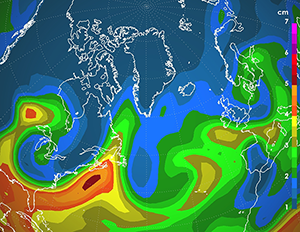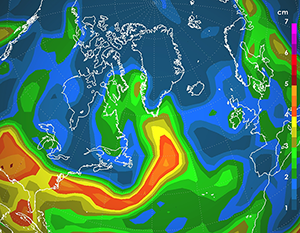Common factors behind Greenland 2012 and 1889 melt episodes
April 24, 2014
Bill Neff, Gil Compo and Matthew Shupe, CIRES researchers working at ESRL's Physical Sciences Laboratory (PSL), along with Marty Ralph of Scripps Institution of Oceanography, are co-authors of a new study that shows some of the same weather and climate factors were responsible for melting episodes in Greenland in 1889 and 2012. Information and expertise across PSL on atmospheric rivers, observations from the ICECAPS research project, and data from the 20th Century Reanalysis, were major research components of this study.
The team found several key factors contributed to the melting conditions: 1) heat waves and drought gripped North American regions upwind of Greenland, 2) ocean surface temperatures south of Greenland were higher than average (~ 2°F in 1889 and ~ 4H in 2012), and 3) wind and pressure patterns in North America were ideal for steering atmospheric rivers of relatively warm, moist air up along the west coast of Greenland and then over the ice sheet.
Better understanding how factors that can occur naturally, such as long-term droughts or short-term atmospheric rivers, combine to produce an extreme event, such as Greenland’s melt, can help researchers better explain and forecast these events.
Read the full press release at CIRES

